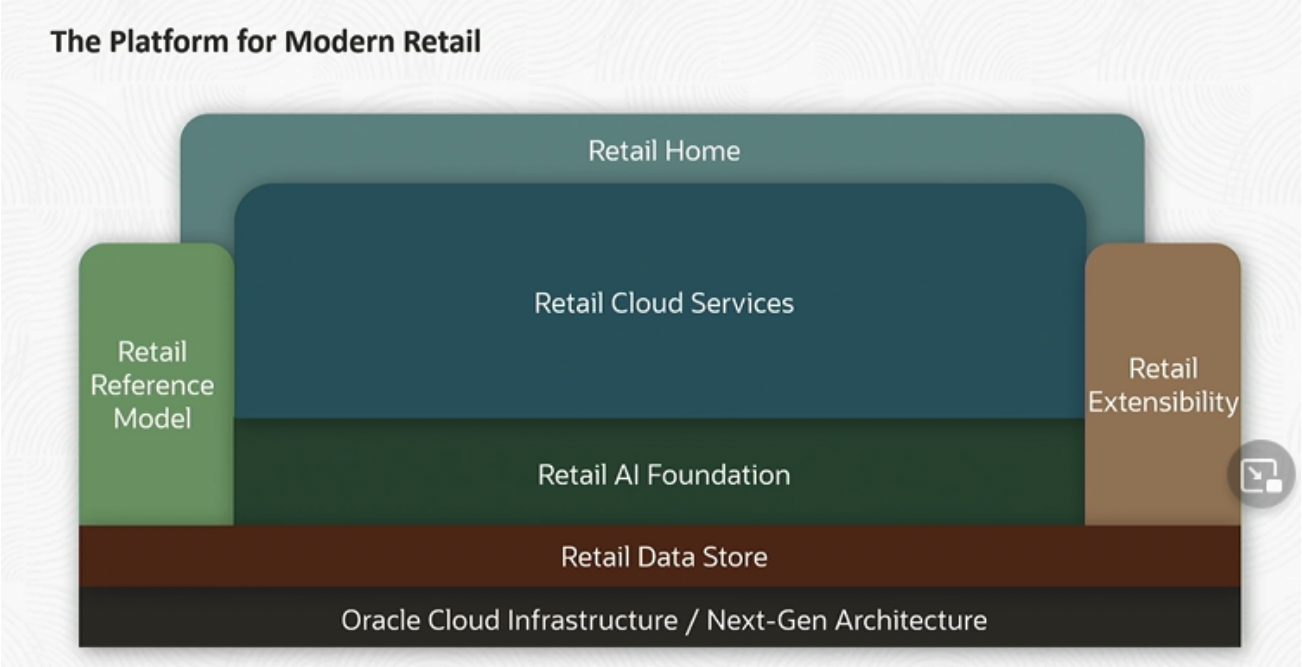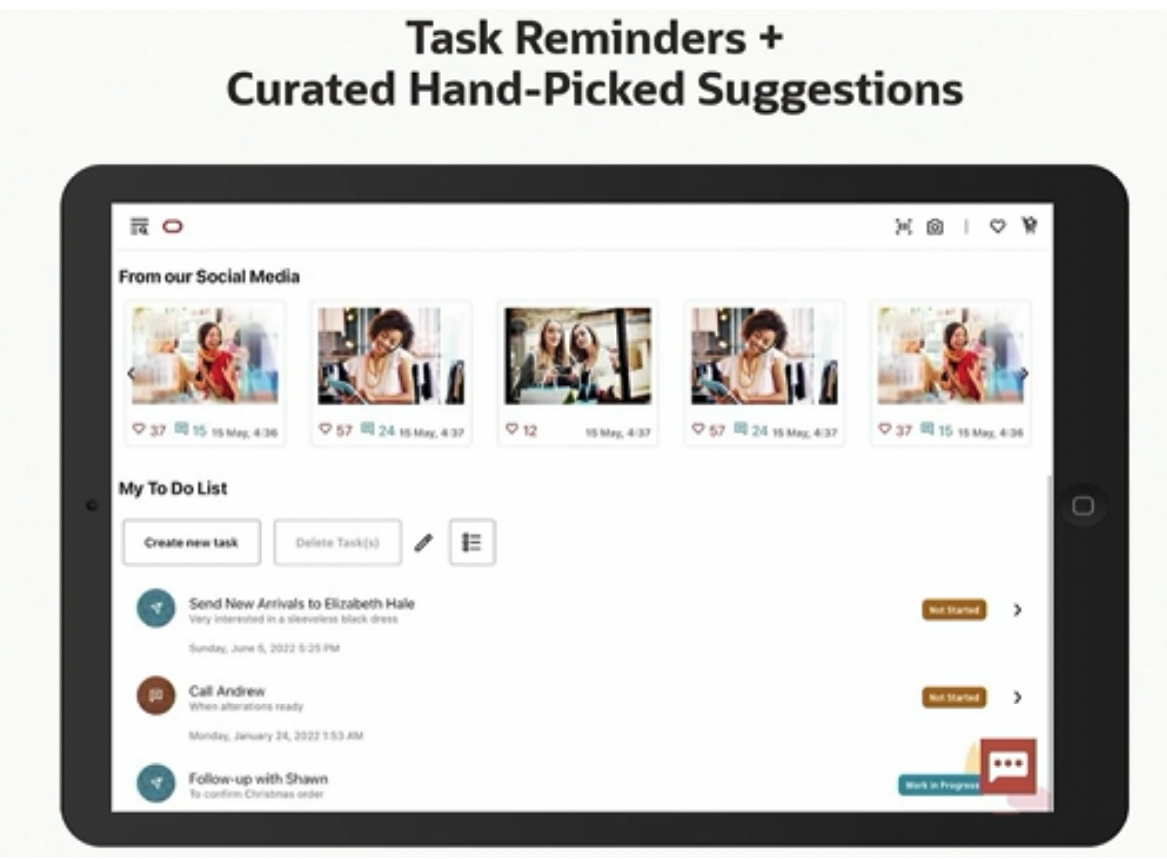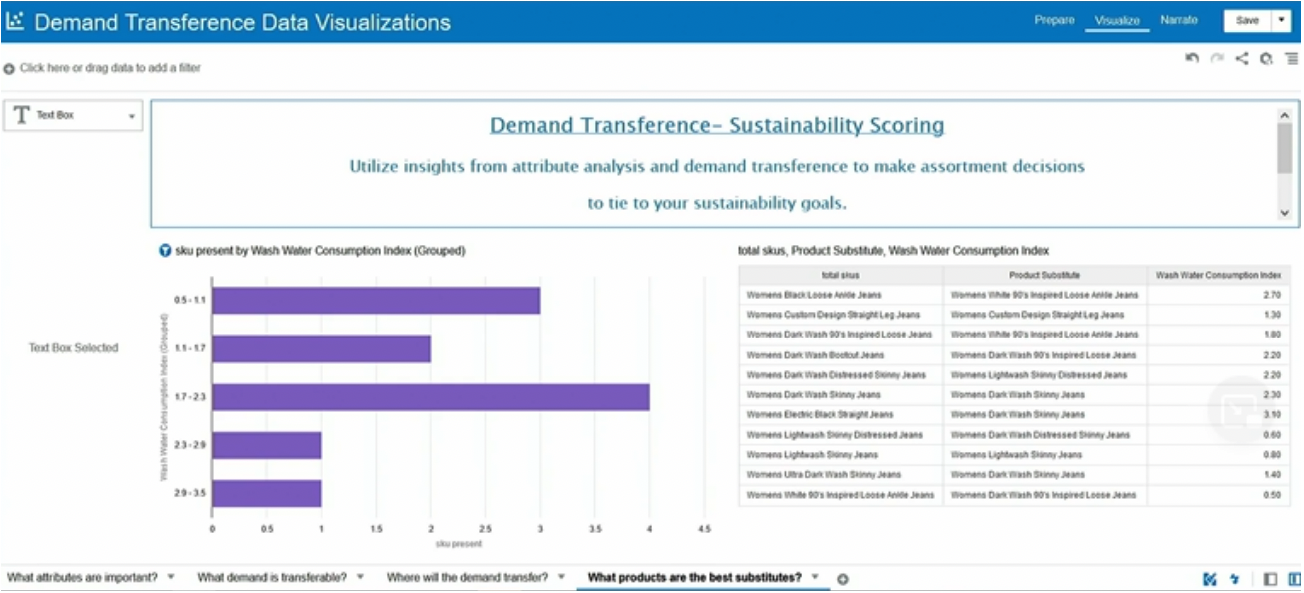
Nitheesh NH
Introduction
From June 15‒17, 2022, Coresight Research attended the Oracle Retail Cross Talk event, which took place in person for the first time in three years. The event began with keynote addresses on day one. Days two and three featured presentations from customers such as Best Buy, Helzberg Diamonds, Neiman Marcus and Staples on topics including AI, cloud adoption, supply chains and sustainability. In this report, we focus on the developments and insights from Oracle Retail on day one of the event.Oracle Retail Cross Talk 2022, Day One: Key Insights
Keynote Address: Trends and Themes In the opening keynote, Mike Webster, Senior Vice President and General Manager at Oracle Retail, offered five trends in retail that the company is watching:- Economic uncertainty
- Changing consumer expectations—from product availability to sustainability
- Constraint-based execution—Inflation plus long-term commitments have locked retailers into a higher cost basis.
- ESG (environmental, social and corporate governance) scope—Oracle Retail believes that sustainability is an opportunity to drive margins.
- Diverse and inclusive workspaces—Retail has been a champion in this regard, and diversity goals serve the greater good.
Figure 1. Retail Executives’ Top Priority for the Next Six Months (% of Respondents) [caption id="attachment_152529" align="aligncenter" width="700"]
 Source: Oracle[/caption]
Oracle’s New Retail Platform: The Star of the Show
The centerpiece of the event was Oracle’s new Platform for Modern Retail, which represents the result of billions of dollars in R&D (research and development) investment and 30 years of maturity in serving the retail industry.
In designing its new platform, Oracle’s goals were for it to be:
Source: Oracle[/caption]
Oracle’s New Retail Platform: The Star of the Show
The centerpiece of the event was Oracle’s new Platform for Modern Retail, which represents the result of billions of dollars in R&D (research and development) investment and 30 years of maturity in serving the retail industry.
In designing its new platform, Oracle’s goals were for it to be:
- Performant
- Scalable—able to handle the largest processes and heaviest users with sufficient infrastructure
- Transparent—enabling users to measure how much of its service they are using, including groups within the organization, as well as comparisons to other users
- Documented—as in the Reference Model (which we discuss later)
- Extensible—enabling users to add their “secret sauce,” with the apps and data protected by high-grade security
 Source: Oracle company reports[/caption]
As shown in the image above, the platform has the several key features:
Source: Oracle company reports[/caption]
As shown in the image above, the platform has the several key features:
- Retail Data Store—The platform is built on a common data store (a data storage area, not to be confused with a physical store), which makes all data available to all services and extensions. This provides a solution to data being stored in separate silos, which has occurred as retailers added new functions throughout the years. Customers can add and use their own schemas (i.e., database structures) within the store.
- Retail AI Foundation—The platform provides several AI (artificial intelligence) functions that are available to every cloud service and throughout the retail platform.
- Retail Cloud Services—Management announced the availability of 45 purpose-built, scalable cloud services created to solve the most pressing retail challenges.
- Retail Home—This set of customized dashboards provides views and analytics on the retail data contained within the data store, reflecting various tasks and functions. For example, an assortment planner could review three dashboards—assortments, an allocation plan and a financial plan—enabling them to understand the workload and set priorities.
 Retail Home mockup
Retail Home mockupSource: Oracle company reports[/caption] Oracle Retail highlighted three important elements of the platform, which we outline below. 1. Extensibility The company has stressed extensibility rather than configurability, meaning that the platform does not incorporate every imaginable function—users can create their own unique extensions which interact with the platform, enabling the company to avoid the massive complexity from developing functions for every customer’s unique needs. The key to this extensibility is Oracle APEX, which is a low-code platform (i.e., requiring little writing of program code) that can be used to develop scalable, enterprise-quality applications. For example, Oracle used its own platform to build an extension for clienteling (using customer data to offer personalized experiences that increase satisfaction and loyalty) as a cloud-based service within a couple of months. The company plans to build 30 extensions this year. 2. Auditing Oracle’s apps run on its own secure cloud and management stressed the importance of SOC 2 compliance, which is the determination of an audit that ensures that data is handled in a secure manner that protects the organization and its clients. It is an industry-standard certification that can be accepted by boards of directors. 3. Reference Model This model (an evolution of the Retail Reference Library) documents retail business processes, technical models and extensions that follow retail best practices and help customers use the Oracle retail cloud services. Pivot to Customer—Clienteling App Demo Lara Livgard, Senior Director at Oracle Retail, and Danny Beltran, Master Principal Sales Consultant at Oracle Retail, demonstrated the clienteling app that Oracle developed within a couple of months, demonstrating the power of the no-code platform. The demo showed both sales associate clienteling activity (on a tablet) and customer activity (on a smartphone) in a simulated retail engagement in three stages:
- Clienteling (tablet)—The associate can see top movers, access customer information and send hand-picked orders and curated items to the customer.
- Customer App (phone)—The customer can see recommended items and shopping lists, review preferences and access a digital assistant.
- Clienteling (tablet)—The associate can receive alerts, view AI-based recommendations (including “shop the look” outfit completions) and accept contactless payments.
 Sample associate clienteling screen
Sample associate clienteling screenSource: Company reports[/caption] Retail Analytics and Planning—Underlying Analytical Capabilities Supporting Oracle’s new platform are several essential retail functions, such as demand forecasting (in the top row of the image below), and several analytical tools (in the bottom row—discussed below.) [caption id="attachment_152533" align="aligncenter" width="700"]
 Source: Company reports[/caption]
Source: Company reports[/caption]
- Customer Segmentation—The company combines performance data with demographic data to segment customers in order to create a better view of the population.
- Advanced Clustering—Using store data such as square footage and region, for example, enables the identification of similar selling patterns.
- Profile Science—Assortment planning is improved by ordering the optimal number of products by size, taking into account where there were stockouts and finding other missed opportunities.
- Attribute Extraction and Binning—The company’s solutions can manage a large number of product attributes, governance and data quality. For example, Helzberg Diamonds, a jewelry retailer, is using Oracle’s platform to generate a similarity score based on product attributes, which helps identify substitutable products.
- Customer Decision Trees—The platform tracks how the customer is actually shopping, such as looking for specific brand or type of product (e.g., a little black dress.)
- Demand Transference—This function analyzes substitutes and substitutability. For example, if a given product is not available (due to supply chain constraints), what is the next best product? Does the product really drive incremental revenue, and is it really needed in the assortment? The function can specify whether there are acceptable substitutes if a product is eliminated to meet sustainability goals (such as minimizing water consumption)., Finally, it can analyze any “halo effect”—i.e., whether the sales of one product tend to drive sales of other products.
 Screenshot of demand transference regarding sustainability
Screenshot of demand transference regarding sustainabilitySource: Oracle company reports[/caption]